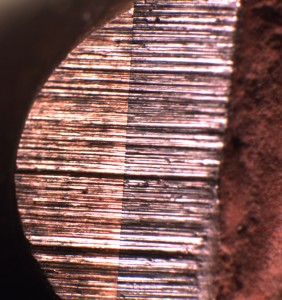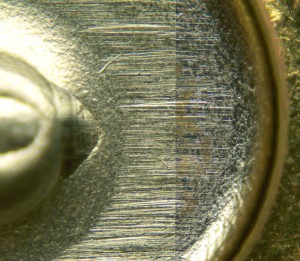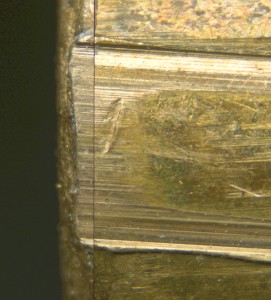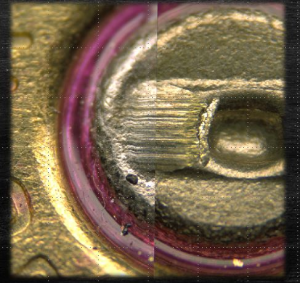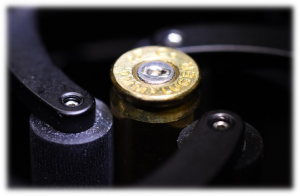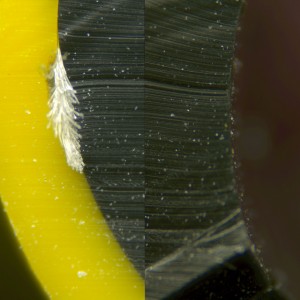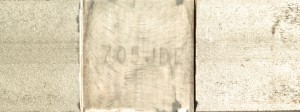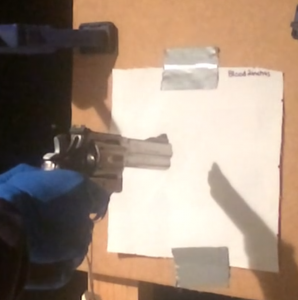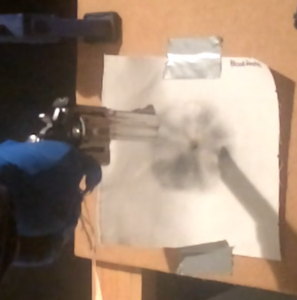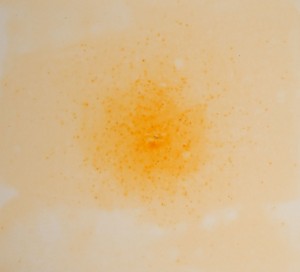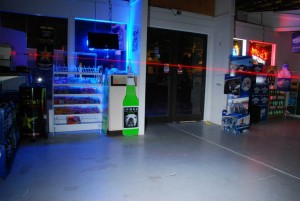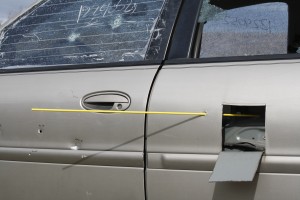Firearms and Toolmarks
The Firearm and Toolmarks section conducts a wide variety of examinations ranging from function testing of firearms to serial number restoration to fracture matching. The most commonly requested examination, incorrectly referred to as ballistics testing, is determining whether ammunition components were fired from a particular firearm.
Using valid scientific procedures, the Firearm and Toolmark section conducts safety and function testing on firearms, analyzes fired ammunition components to determine general rifling characteristics, compare fired and unfired ammunition components to determine if they were fired by a specific firearm, restore serial numbers that have been obscured or obliterated, conduct distance determinations to estimate muzzle to target distance, conduct ejection pattern tests, reconstruct shooting scenes, determine if a specific tool made a certain toolmark, and conduct fracture match examinations. The Firearm and Toolmarks section conducts several trainings throughout the year, and testifies in court to the results of examinations.
The Firearms and Tool Mark section is broken down into several sub-disciplines:
- Firearms Examination
- NIBIN
- Toolmark Analysis
- Serial Number Restoration
- Distance Determination
- Shooting Reconstruction
Firearms Examinations
A firearms comparison, incorrectly referred to as a ballistics examination, is the most commonly requested and involves determining whether or not evidence from a scene (such as cartridges, fired bullets or cartridge cases) was fired from a specific firearm. Case work includes determining what kind of firearm is involved, if it is functional, if any alterations were made to the firearm, and if it is safe to fire – making test fires. Those test fires are then compared to evidence found at a crime scene using a comparison microscope. Even if no firearm is recovered, the fired and unfired ammunition components can still be examined to determine manufacturer, how many firearms were involved, as well as give investigators a list of possible weapons that could have fired those components.
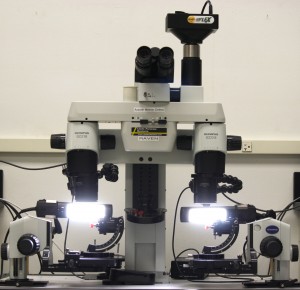 Comparison microscope
Comparison microscope
Breach face comparison
Land impression comparison
NIBIN
National Integrated Ballistic Information Network (NIBIN)
The National Integrated Ballistic Information Network (NIBIN) is a database system that captures, stores, and correlates digital images of fired cartridge cases recovered from crime scenes and test-fired firearms. NIBIN searches for other cartridge cases with similar tool marks, creating a list of possible associations. This correlation process can result in leads or hits that have tactical and strategic uses for law enforcement. NIBIN also helps law enforcement analyze and understand patterns of gun crime, including gun sharing and trafficking. The NIBIN program has proven successful at linking crimes and identifying shooters. For example, in 2019 there were 74 groups of NIBIN hits which linked over 180 cases and led to actionable intelligence for law enforcement.
How NIBIN Works
The National Integrated Ballistic Information Network (NIBIN) is a database that allows for known (test fires) and unknown (evidence) cartridge cases to be imaged and searched against other images in the database. As new images are entered, NIBIN continues to search against previous entries. The default search are for Utah includes all of Utah’s entries, along with entries in neighboring states like Colorado or Nevada. Manual searches can be conducted against any other NIBIN site in the US upon request. These searches, analyzed by an algorithm, result in a list of possible associations that are examined by trained NIBIN Technicians or Firearms Examiners located at the UBFS or the ATF’s NIBIN National Correlation Training Center (NNCTC).
A Lead Notification is issued if a possible association is found using the NIBIN system software. As this evidence has not been examined microscopically by a Firearms Examiner, a Lead Notification cannot be used for court purposes.
A complete examination of all related evidence, resulting in a Crime Lab report, is necessary if the case goes to trial.
As of September 20, 2021, all new NIBIN entries will be correlated by the NNCTC. The NNCTC will be responsible for disseminating their results.
For questions related to NIBIN, contact NIBIN Program Administrator Jennifer Gelston (jgelston@utah.gov) or the Firearms Section at (801) 816-3810.
Toolmark Analysis
This analysis involves tedious microscopic examinations and empirical testing to determine if a mark found at a scene was made by a specific tool. These examinations can be challenging due to the various ways a tool can be held, applied, and used. Examinations range from bolt cutters used to cut locks, tires stabbed with knives, or wire cutters used to cut copper pipe. While often encountered in property crimes, these marks can also be found in other cases such as homicides (i.e. knife marks on bone or cartilage).
Serial Number Restoration
Serial numbers are unique identifiers applied to an item such as a firearm, electronic equipment, or vehicles. Serial numbers can include letters, numbers, and special characters. The Gun Control Act of 1968 requires all imported and newly manufactured firearms to have a unique identifier on the frame or receiver of the firearm. Destroying, or attempting to destroy, serial numbers is a federal crime. While the presence alone of an obliterated number can be documented and used for prosecution, restoring the number allows for tracing the history of the item. Restoration can be accomplished using methods ranging from polishing to chemical etching.
Obliterated serial number prior to restoration 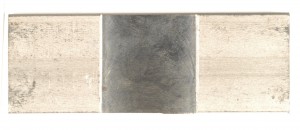
Serial number post restoration processing
Distance Determinations
When a firearm is discharged, a projectile exits the barrel along with residues including burnt, partially burnt, and unburnt powder particles. Estimating the distance between the muzzle of a firearm and a target is based on the pattern of these residues left behind on the target surface. Target surfaces can include skin, clothing, and vehicles. The size and density of the residue pattern varies with distance and can be compared to test patterns made with the same firearm, the same or similar ammunition, and a similar target substrate. Along with a visual examination, surfaces can be treated chemically to reveal patterns left behind by nitrates and lead.
Distance determinations can also be performed with shotguns by analyzing the spread of the projectiles over a distance.
Results of distance determinations are usually reported as a range, such as “greater than 6 inches but less than 15 inches”. This is a result of the numerous variables involved in the testing including the ammunition lot, target surface composition, weather, intervening objects, etc.
Shooting Reconstructions
Reconstructing a crime scene involving discharged firearms can assist in determining the most likely scenario. The information derived from a reconstruction can assist in defining a sequence of events, determining the number and/or sequence of shots, as well as ruling out/in possible scenarios.
At the scene, bullet impacts and trajectories can be determined and measured. Reports, photographs, diagrams, etc. are all important. At the lab, firearms examinations are necessary to determine which firearm fired which bullet, cartridge case, etc. Distance determinations can also apply, as well as ejection pattern analysis.
No two reconstructions are alike – some may require more experimentation than others. In general though, reconstructions can help explain what happened and make sense of a scene, as well as rule out what could NOT have happened.
Along with conducting reconstructions, the Firearm and Tool Mark Section teaches a 3 day Introduction to Firearms and Shooting Scene Reconstruction class that helps agencies to not only understand how to approach a shooting scene but also what can be helpful in reconstructions. The class includes the following topics:
-Introduction to firearms examinations and what the UBFS Firearm and Tool Mark Section can do for you.
-Hands on familiarity with various firearms and ammunition
-Bullet impacts, ricochets, and trajectories
-Live demonstrations of shotgun projectile dispersions
-Live demonstrations using vehicles to examine differences between calibers, gauge, projectile style, direct impacts, ricochets, etc.

